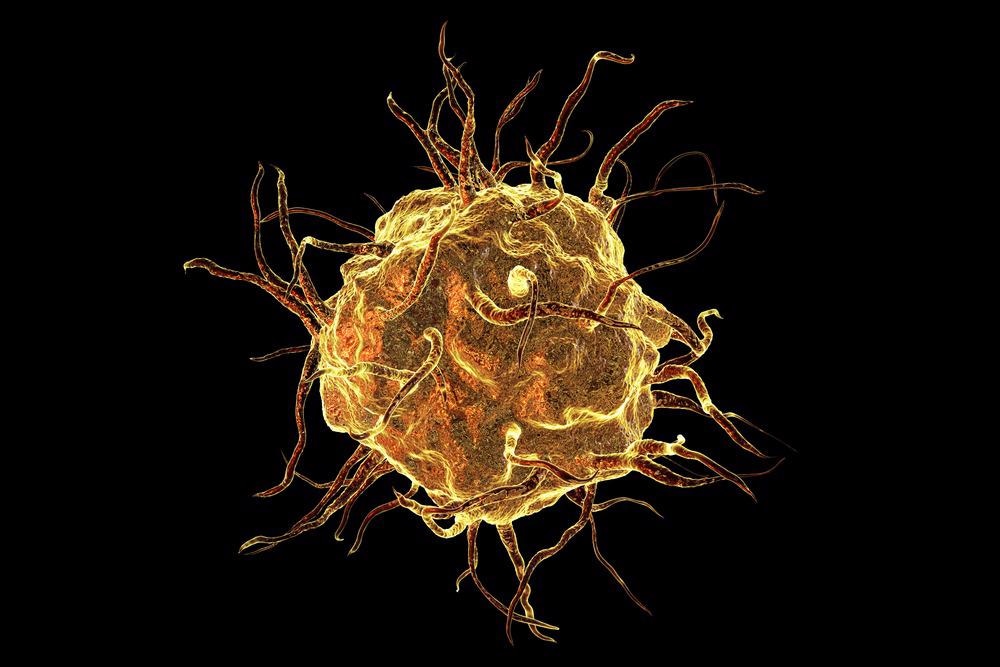In a recent article published in the journal Small, the authors showed that two-dimensional (2D) transition metal dichalcogenides (TMDs) triggered trained immunity in macrophages derived from primary human monocytes.

Study: 2D Transition Metal Dichalcogenides Trigger Trained Immunity in Human Macrophages through Epigenetic and Metabolic Pathways. Image Credit: Kateryna Kon/Shutterstock.com
The team observed that the TMD exposed macrophages modulated the immune-specific gene expression on succeeding challenges with bacterial lipopolysaccharides. Molybdenum disulfide (MoS2) triggered an elevation in cyclic adenosine monophosphate (cAMP) levels and upregulated Mo-dependent enzymes in the macrophages.
Trained Immunity and Its Induction
The activation of innate immunity facilitates an enhanced response to secondary challenges with microbes leading to trained immunity. Both metabolic and epigenetic pathways can shape the induction of this trained immunity.
The β-gluconate in the microbial cell wall and attenuated bacillus Calmette–Guérin (BCG) vaccine induce trained immunity by boosting the antimicrobial activity in myeloid cells. Moreover, a recent study with macrophages derived from murine bone marrow and exposed to bovine serum albumin (endotoxin-free) exfoliated pristine graphene showed trained immunity.
There have been extensive studies on the impact of 2D materials on the environment and human health. Further studies on graphene-based material’s (GBM) interaction with murine and humane macrophages confirmed the effect of TMDs on macrophages. The non-toxicity of TMDs like MoS2 and WS2 on macrophages was also previously reported. However, there are no reports on 2D material-induced trained immunity.
TMDs to Induce Trained Immunity
In the present study, the authors synthesized TMDs, MoS2, and tungsten disulfide (WS2) using the pyrene-assisted exfoliation method. However, the quantification of the adsorbed pyrene was not possible due to the presence of free pyrene in water, which had no toxic effects on 2D inks. Moreover, the transmission electron microscope (TEM) images and Raman confocal mapping confirmed the cellular uptake of synthesized TMDs. Subsequently, the authors confirmed TMD-triggered trained immunity in macrophages. They employed a trained-immunity protocol and monitored the cells for the expression of 84 immune-related genes.
An enzyme-linked immunosorbent assay was used to validate the results and evaluate the role of metabolic and epigenetic reprogramming along with cAMP signaling. The current study demonstrates an understanding of 2D TMDs and their immune system interactions.
Research Findings
The authors of the present study proposed that Mo-containing 2D nanosheets may induce a relevant effect in innate immune cells and suggested that further in vivo studies can evaluate their scope in clinical applications. They confirmed the non-cytotoxic nature of synthesized 2D materials toward macrophages up to a dosage of 100 micrograms per milliliter, which aligns with previous studies.
MoS2 and WS2 were internalized quickly by the macrophages. However, cytochalasin D impeded the uptake of MoS2, suggesting that the uptake of TMDs by macrophages depended on actin. The results from inductively coupled plasma mass spectrometry (ICP-MS) confirmed the uptake of MoS2. However, the uptake of sodium molybdate (Na2MoO4) was undetected, suggesting the preferential macrophage uptake of Mo. Further, due to the Trojan horse effect, Na2MoO4 did not trigger trained immunity, while the MoS2 conveniently did.
The cells exposed to WS2 did not induce any change in genes related to the Moco biosynthetic pathway, suggesting Mo-specific gene modulation. Moreover, the authors observed an increase in AOX1 genes encoding Mo-dependent enzymes in macrophages trained with WS2. Furthermore, the uptake of Mo and W through 2D nanosheets can overcome the need for a transporter for their delivery into the cells.
The exfoliation of 2D nanosheets with 1-pyrenesulfonic acid sodium salt is an endotoxin-free method without triggering any cytokine responses in primary human macrophages. The polymerase chain reaction (PCR) profiling of gene expression to evaluate the long-term effects of 2D materials showed that MoS2 and WS2 induced trained immunity in human macrophages.
The authors propose an interlink between metabolic and epigenetic pathways in inducing trained immunity. The reversion in MoS2-trained responses by adenylate cyclase inhibitor 2',5'-dideoxyadenosine (ddA) provides evidence that cAMP signaling was affected by MoS2. Also, MoS2 activated adenylate cyclase in macrophages, partially reversed by ddA. These effects are attributed to the bioavailability of Mo upon uptake of MoS2 by cells.
Conclusion
The current study demonstrated that MoS2 triggers trained immunity in macrophages. The authors also showed that metabolic and epigenetic pathways are involved in MoS2-trained cells engaging in cAMP signaling. The induction of Mo-dependent genes confirmed the bioavailability of Mo upon ingestion of MoS2 nanosheets by the cells.
Moreover, the 2D nanosheets ingested were non-cytotoxic, thus making them ideal for biomedical applications. Furthermore, trained immunity is a reliable approach to achieving therapeutic benefits in the long term. The authors demonstrated that MoS2 was efficient in training macrophages and did not require additional functionalization.
Reference
Peng, G., Keshavan, S., Delogu, L., Shin, Y., Casiraghi, C., Fadeel, B (2022). 2D Transition Metal Dichalcogenides Trigger Trained Immunity in Human Macrophages through Epigenetic and Metabolic Pathways. Small, 2107816. https://onlinelibrary.wiley.com/doi/10.1002/smll.202107816
Disclaimer: The views expressed here are those of the author expressed in their private capacity and do not necessarily represent the views of AZoM.com Limited T/A AZoNetwork the owner and operator of this website. This disclaimer forms part of the Terms and conditions of use of this website.